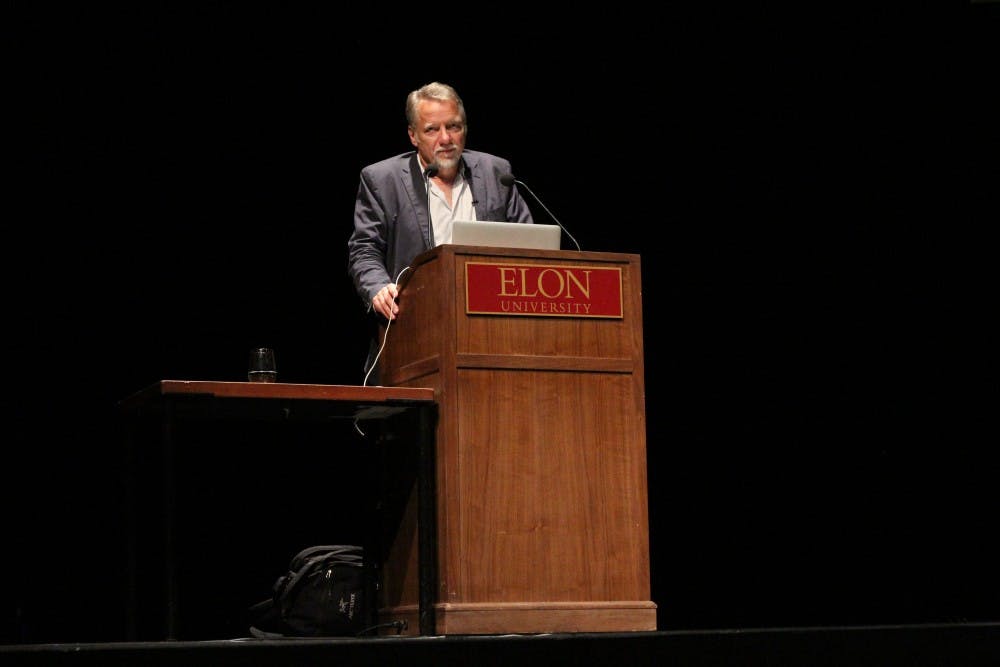Members of the Elon community gathered Tuesday evening in McCrary Theater for the first cultural event of the year.
World-renowned landscape photographer Edward Burtynsky presented projects and the processes he went through to capture the stories, which described the industries surrounding earth’s natural resources.
Burtynsky’s work illustrating the effects of globalization on the planet has taken him around the world: from Canada’s railways to quarries in Portugal and abandoned oil fields in Azerbaijan. He followed oil tankers from the United States to their destruction in a port in Bangladesh by poor workers being paid one or two dollars a day to cut up the metal—metal then used to construct skyscrapers and other buildings in the country.

“We’re drawn to the desire of a good life,” he said. “But we’re becoming more aware of the consequences of it. We’re trying to cope with an ever-growing population and the problems that come with that, like depleting resources.”
Burtynsky also worked extensively withUtah’s Bingham Valley and the Chuquicamata copper mine in Chile’s Atacama Desert, which fought over the title of the world’s largest mine.
Burtynsky has also photographed the waste created from these industries, such as tailings. Everything dug up cannot be replaced; it needs to go somewhere, Burntynsky explained.
“We are working at a scale unprecedented in human history,” Burtynsky said. “Copper comes from this remote place. We’ve engaged with the products from these places. And people ask, well, ‘Why would you go there?’ Indeed, if you went there, you would see a barbed wire fence around the mine, and would need permission to access it.”
He displayed photos of airfields with jets, dumps with oil barrels and a lot full of used tires, all of them which, according to Burntynsky, were waiting to be recycled. The lot of tires was so full that when lightning struck the pile, it burned for two years.
Burntynsky spent years attempting to find his own style of artwork. He studied famous artists and mediums and eventually found his answer in the woods.
“Nature is one of the most complex environments to capture,” he said. “If I was going to bring something new to this field, I needed to shift my focus.”
From there, Burtynsky began to notice the changes in the earth because of human interference. He saw a need for bodies of work that captured the changing geography of the world as resources dried up.
“Nature is an omnipresent force,” Burtynsky said. “In enclosing ourselves, protecting ourselves, from nature, we are the omnipresent force. We’re actually reshaping the planet.”
Burtynsky’s connections between the products we use and their origins struck chords with students.
“It’s a stark reminder of the world we don’t like to think about,” said Trevor Fox. “It reminded me that we are moving in a direction that can’t be changed.”
Towards the end of his talk, Burntynsky showed the audience a five minute clip of his documentary “Watermark,” a film that shows how we shape water and how water shapes us.
The film took him from the deserts of Latin America to the shores of the Ganges River in India and the Three Gorges Dam in China. The whole time, he focused on the changes in geography, not on the industries causing those changes.
“It doesn’t matter where you are on the spectrum: rich or poor, left or right politically,” he said. “This is a story about our survival and our needs, which aren’t that different from each other. This is about the dangers of these activities. That’s a healthier conversation than pointing fingers.”


